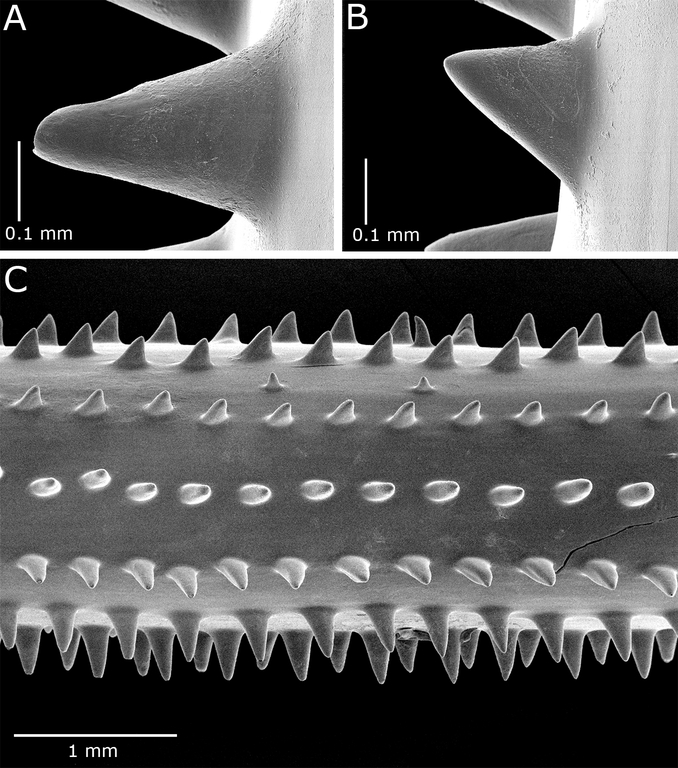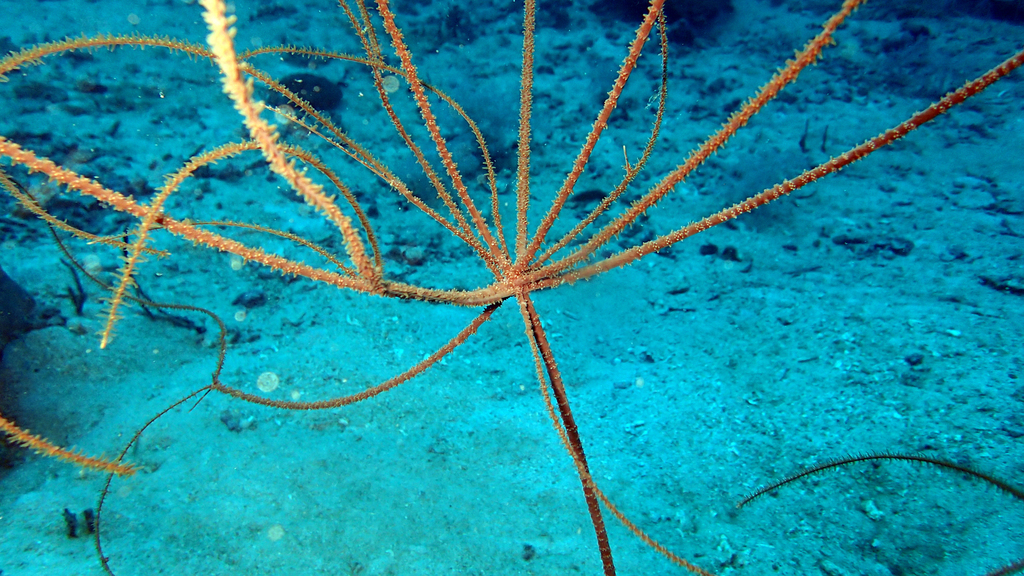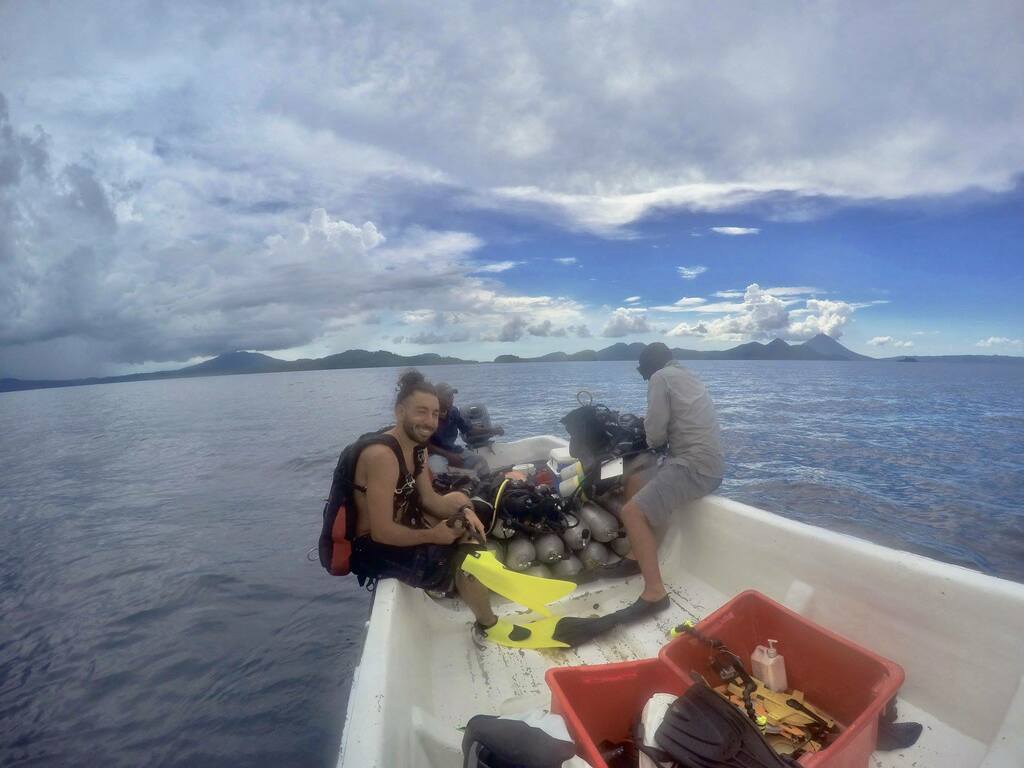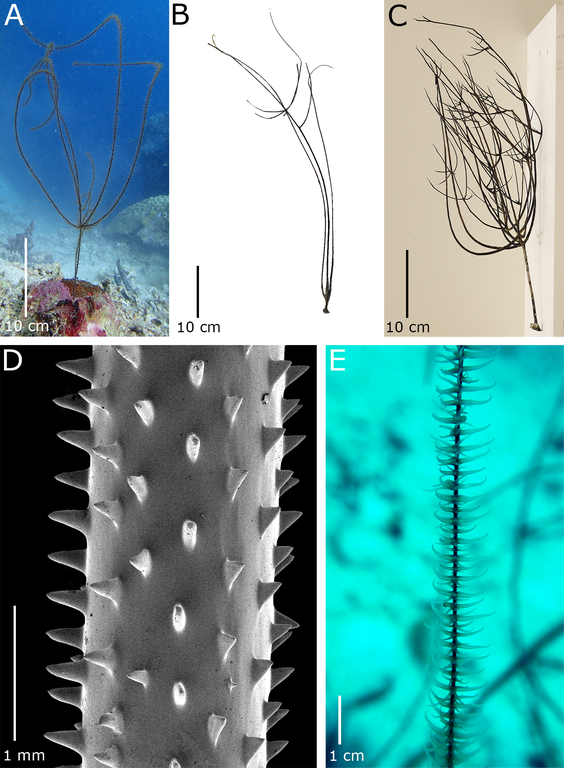Behind the science:
Morphological and molecular description of a new genus and species ...
2020, September 22
Posted by Veronica Radice
Fields
Taxonomy
Focusgroups
Antipatharia (Black Corals)
Locations
Papua New Guinea
Platforms
SCUBA (open-circuit or unspecified)
“New genus (Blastopathes) and species of black coral discovered in Papua New Guinea”
What was the most challenging aspect of your study (can be anything from field, lab to analysis)?
One of the most informative features in identifying black coral species, genera, and families are characteristics associated with skeletal spines; small (<1 mm in height) protrusions along the skeleton. Viewing these spines requires images with a Scanning Electron Microscope (SEM). Removing tissue from the skeleton, orienting the cleaned spines on a SEM stub (mount), and focusing on individual spines requires precision and patience. However, it does make for spectacular images!
What was the most memorable moment in undertaking this study?
Stumbling across the holotype specimen was certainly the most memorable moment of this study. I was assisting Dr Chancey MacDonald in Kimbe Bay, Papua New Guinea at 30 meters depth, coiling up the transect tape and out of the corner of my eye I saw a large and strange yet elegant and mythology-inspiring black coral. I dropped the transect tape (sorry Chancey!) and swam over to the colony and stared in awe. I knew immediately that it was undescribed, and as my dive computer politely ask me to ascend, I knew I would return to this site to collect this colony, which ended up being the holotype of an entirely new genus.
What was your favorite research site in this study and why?
Vanessa’s Reef in Kimbe Bay, Papua New Guinea, which is where I found the holotype specimen. After finding this first colony, I found numerous more in the same dive site and now know that it is quite abundant on mesophotic reefs in Kimbe Bay.
Other than your co-authors, with whom would you like to share credit for this work?
The acknowledgement section of this study is quite large because I had a lot of help. First and foremost, black coral expert Dr Dennis Opresko for teaching me everything I know about black corals. Also, Chancey MacDonald, Jamie Emm, Ben Cresswell, and Gemma Galbraith for helping me in Kimbe Bay as I collected samples. This team of scientists are excellent in the field and make the work feel less like work and more like a day at sea with friends. Also, I couldn’t have done this work without support of Walindi Plantation Resort and Mahonia Na Dari (Guardian of the Sea) a non-government organization whose mission is to understand and conserve the natural environments of Kimbe Bay.
Any important lessons learned (through mistakes, experience or methodological advances)?
Discovering new species and genera can be very exciting. However, it is important that you rise above the excitement and make sure you photograph specimens in-situ and in the lab with labels, as well as preserve subsampled tissue with labels to ensure that you can track a sample or image back to the original colony. This procedure took me a while to get this right; it saves a lot of time and avoids confusion in the future. Another lesson I learned is how beneficial new molecular techniques are becoming in understanding species, genus, and family boundaries. Using ultraconserved elements (UCEs), I was able to determine that the Blastopathes specimens sequenced in this study belong to one species because of the very few differences found within the 100s of comparable loci. UCEs are changing the way we identify and describe new species, and depict evolutionary relationships among Anthozoan groups. Now is an excellent time to be working on black corals.
Can we expect any follow-up on this work?
Absolutely! The new genus Blastopathes was abundant in Kimbe Bay and likely occurs in neighboring sites within Papua New Guinea, and possibly other countries. As a matter of fact, in August Merrick Ekins with the Queensland Museum sent me an image of a black coral specimen housed at the Queensland Museum with Blastopathes-like features that was collected in the early 1990s from Madang, PNG. I plan to return to Papua New Guinea to find where else Blastopathes occurs and if more species remain undiscovered within this new genus. We have just begun understanding the taxonomy and evolutionary history of black corals, and finding such a large and extravagant-looking coral in a relatively shallow and commonly explored dive site suggests that many more species and genera remain to be discovered.
Featured article:
|
|
Morphological and molecular description of a new genus and species of black coral (Cnidaria: Anthozoa: Hexacorallia: Antipatharia: Antipathidae: Bl... | article Horowitz J, Brugler MR, Bridge TCL, Cowman PF (2020) Zootaxa 4821:553–569 |
|




